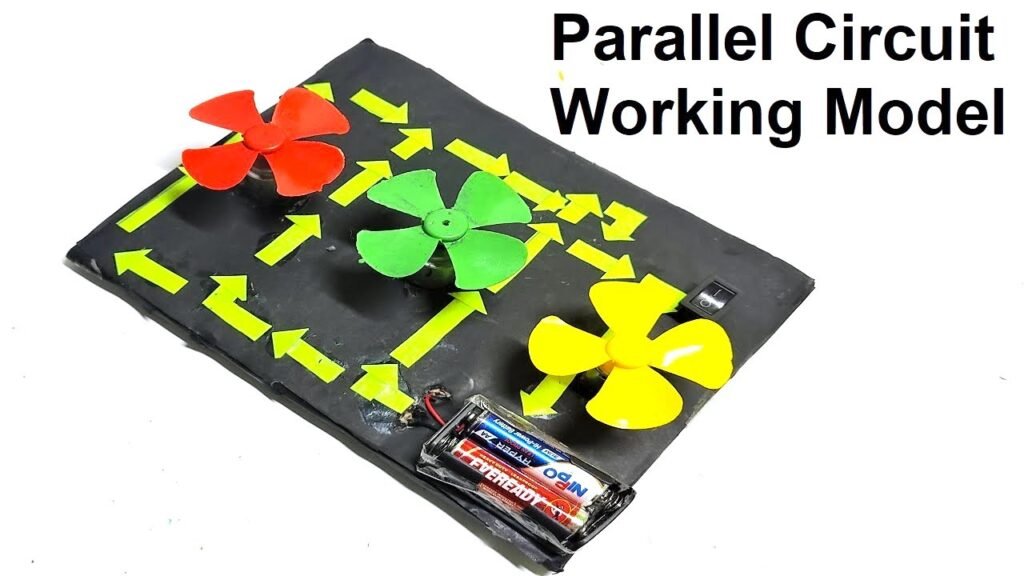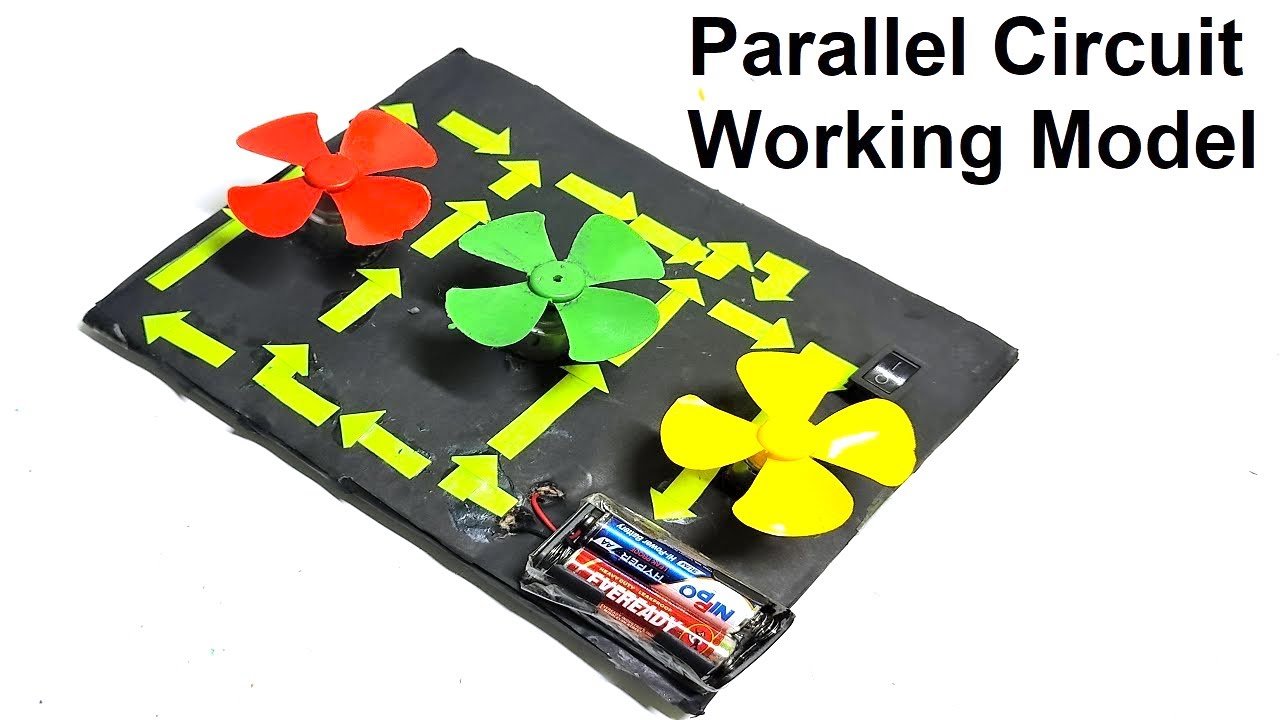What is parallel circuit?
A parallel circuit is a type of electrical circuit where multiple paths for the current exist, meaning that each component is connected across the same two points, providing separate paths for electricity to flow.
In this parallel circuit , if one path is interrupted or one component stops working, the other paths still allow current to flow through the other components.
For example, in a string of lights wired in parallel, if one bulb burns out, the rest of the bulbs will continue to light up because the electrical current can bypass the broken bulb and travel through the remaining paths.
How to make the parallel circuit using 3 dc motors
Making a parallel circuit working model with a 9V battery, three DC motors with blades, a switch, and cardboard is a great project to demonstrate the principles of parallel circuits.

Here’s a step-by-step guide to help you build this project:
Materials Needed:
- 9V battery
- Battery clip (to connect the battery)
- Three small DC motors with blades
- Switch (single-pole single-throw)
- Wires
- Cardboard
- Hot glue gun and glue sticks
- Scissors or craft knife
- Electrical tape
Step by Step Video Instructions on Parallel Circuit Working model:
1. Prepare the Base:
- Cut a piece of cardboard to act as the base for your model. Ensure it’s large enough to hold all three DC motors and the switch.
2. Mount the Motors:
- Position the three DC motors on the cardboard base. Secure each motor to the cardboard using hot glue. Make sure the motor shafts are free to rotate without obstruction.
3. Connect the Battery and Switch:
- Connect the battery clip to the 9V battery.
- Attach one wire from the battery clip to one terminal of the switch using electrical tape or soldering if available.
- Mount the switch on the cardboard base near the battery.
4. Wiring the Parallel Circuit:
- Cut pieces of wire long enough to connect the components.
- Connect the other terminal of the switch to the positive terminals of all three DC motors. You can do this by creating a junction where the single wire from the switch splits into three wires, each going to a positive terminal of a motor.
- Connect the negative terminals of all three DC motors together and then to the negative wire from the battery clip.
This creates a parallel circuit where each motor has its own separate path to the battery.
5. Secure Connections:
- Use electrical tape to secure and insulate all wire connections to prevent short circuits.
6. Testing:
- Turn on the switch to complete the circuit. All three motors should start spinning their blades. If any motor does not spin, check the connections to ensure they are secure and that the wiring is correct.
parallel circuit Working model Explanation:
Here’s how it works:
- In a parallel circuit, electrical components are connected so that each component has its own direct path to the power source. This means that each component operates independently of the others.
- The 9V battery provides the electrical energy needed to power the motors. It is connected to the circuit using a battery clip.
- The switch allows us to control the flow of electricity in the circuit. When the switch is turned on, it completes the circuit, allowing current to flow from the battery to each of the motors.
- The three DC motors are connected in parallel. Each motor receives the same voltage from the battery, so they all spin at their optimal speed.
- The cardboard base holds all the components in place, making the model easy to handle and demonstrate.
By connecting the components in parallel, we ensure that each motor operates independently. This means that if one motor stops working, the others will continue to operate. This model illustrates how electrical energy can be distributed and used to perform work in a parallel circuit.

